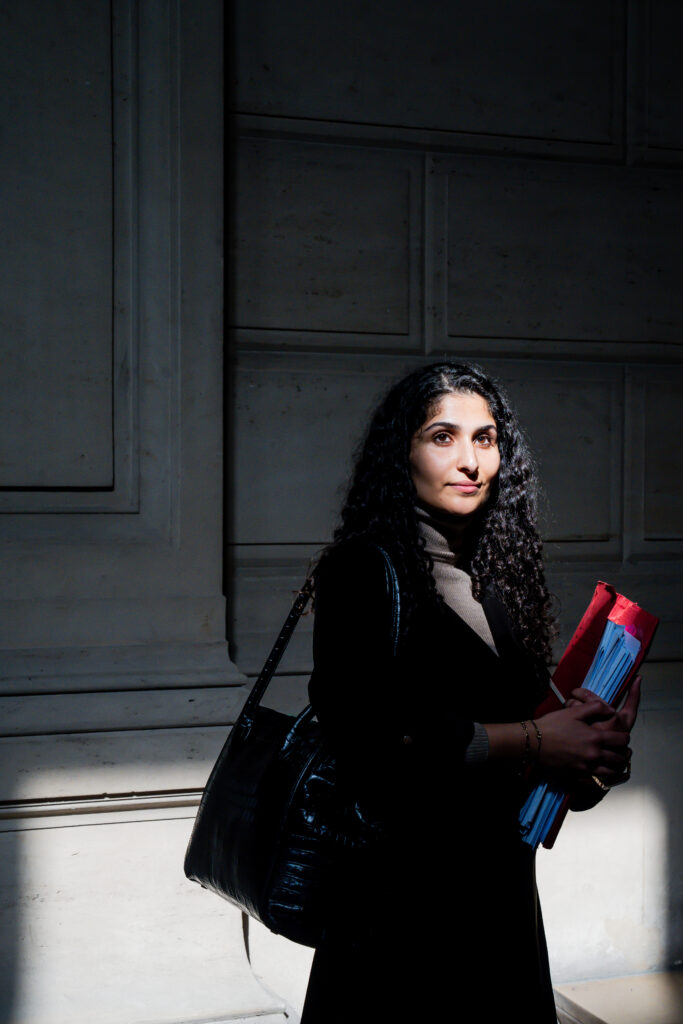De wetswijziging
Ongeveer één op de drie Belgen zou zijn smartphone geregeld gebruiken tijdens het rijden, wat voor een enorme afleiding zorgt op de weg. Uit cijfers van het Belgisch Instituut voor de Verkeersveiligheid (BIVV) blijkt dat dit leidt tot minstens 30 verkeersdoden en 2.500 gewonden per jaar.[1] De wetgever heeft er bijgevolg voor geopteerd om het toepassingsgebied van de Wegcode aanzienlijk te verruimen.
Waar voordien het in de hand houden van een “draagbare telefoon” tijdens het rijden strafbaar werd gesteld, mag men voortaan geen enkel mobiel elektronisch apparaat met een scherm (bv. een e-reader of tablet) meer gebruiken, vasthouden of manipuleren, tenzij het in een daarvoor bestemde houder is bevestigd (artikel 8.4 Wegcode).
Bovendien zullen inbreuken strenger worden bestraft, doordat een inbreuk op artikel 8.4 Wegcode voortaan een overtreding van derde graad – in plaats van tweede graad – uitmaakt. Men kan de volgende bestraffingen oplopen:
- een onmiddellijke inning van 174 euro;
- in geval van een dagvaarding kan men veroordeeld worden tot een geldboete van 240 tot 4.000 euro (reeds vermenigvuldigd met de opdeciemen);
- een verval van het recht tot sturen voor een periode van 8 dagen tot 5 jaar.
Slimme camera’s
Om inbreuken op de Wegcode op te sporen, wil de overheid gebruik maken van slimme camera’s (ANPR) die reeds langs onze wegen staan. Het zijn uiterst slimme camera’s die nummerplaten fotograferen en op automatische wijze vergelijken met kentekens in politiebestanden.
Het gebruik van ANPR-camera’s wordt geregeld door de wet van 21 maart 2007 (de Camerawet) en de Europese Verordening Gegevensbescherming (AVG). Om het recht op privacy en bescherming van de persoonsgegevens van de burgers zo min mogelijk te beperken, mogen ANPR-camera’s enkel worden gebruikt om nummerplaten te herkennen en om verkeersovertredingen te bestraffen. Bovendien dient de verwerking van de gegevens te gebeuren overeenkomstig de wetgeving inzake de bescherming van persoonsgegevens. Vandaag mogen de slimme camera’s, overeenkomstig de Camerawet enkel nummerplaten herkennen, maar de bedoeling is dat de camera’s een foto nemen door de voorruit, waardoor het systeem kan detecteren of een bestuurder een telefoon in de hand heeft. De camera’s zouden kunnen vaststellen wie er in het voertuig zit en welke handelingen er worden gesteld met elektronische toestellen. Het kan dus veel verder gaan dan enkel nummerplaatherkenning, maar het wettelijk kader hiervoor dient nog te worden voorzien.
Veiligheid of privacy?
Hoewel het voornaamste doel van de ANPR-camera’s het fotograferen en herkennen van nummerplaten is om verkeersovertredingen op te sporen, kan het op termijn perfect mogelijk zijn dat ze gezichten zouden kunnen herkennen en hier ook effectief voor worden ingezet. Men zou nog een stap verder kunnen gaan: de slimme camera’s zouden zelfs gebruikt kunnen worden voor het opsporen van daders van wanbedrijven of misdaden (en dus niet alleen voor verkeersovertredingen).
De vraag rijst hoe het gebruik van ANPR-camera’s met gezichtsherkenning in verhouding staat met het recht op privacy en of we massaal die grondrechten op dergelijk ingrijpende wijze wensen op te geven voor onze eigen veiligheid en die van anderen.
De ANPR-camera’s wekken namelijk het gevoel op dat we voortdurend in de gaten worden gehouden van zodra we ons in het straatbeeld begeven, terwijl men enkel geobserveerd zou mogen worden van zodra er een redelijk vermoeden bestaat dat men een strafbaar feit pleegt of aan het plegen is.
Dergelijke veiligheidstechnologie heeft bijgevolg een beduidende impact op ons recht op privacy zoals verankerd in artikel 8 van het Europees Verdrag van de Rechten van de Mens (EVRM) dat het volgende stelt:
“Eenieder heeft het recht op respect voor zijn privéleven, zijn familie- en gezinsleven, zijn woning en zijn correspondentie. Geen inmenging van enig openbaar gezag is toegestaan in de uitoefening van dit recht, dan voor zover bij de wet is voorzien en in een democratische samenleving noodzakelijk is in het belang van ‘s lands veiligheid, de openbare veiligheid of het economisch welzijn van het land, het voorkomen van wanordelijkheden en strafbare feiten, de bescherming van de gezondheid of de goede zeden of voor de bescherming van de rechten en vrijheden van anderen.”
Een inbreuk op de persoonlijke levenssfeer dient dan ook steeds – in overeenstemming met artikel 8 EVRM – noodzakelijk te zijn en bij wet te zijn voorzien.
Verder dient cameratoezicht te worden getoetst aan de basisbeginselen van subsidiariteit en proportionaliteit. Volgens het subsidiariteitsbeginsel is een ingrijpen in de privacy slechts toegelaten wanneer er geen andere, minder ingrijpende maatregel voorhanden is die hetzelfde doel kan bereiken. Het proportionaliteitsbeginsel stelt dat de genomen maatregel (nl. gezichtsherkenning via een ANPR-camera) in verhouding moet staan met het nagestreefde doel.
Cameratoezicht dat niet in overeenstemming is met deze beginselen kan leiden tot een controle- en repressiemaatschappij, waarbij een grondbeginsel van het strafrecht, namelijk dat van het vermoeden van onschuld, in het gedrang dreigt te komen. Dit vermoeden houdt in dat burgers in strafzaken het voordeel van de twijfel krijgen – en dus onschuldig zijn – tot het tegendeel bewezen is. Het is het openbaar ministerie die steeds de bewijslast dient te dragen en à charge en à décharge op zoek moet gaan naar bewijzen. Dit rechtsprincipe zou aan de hand van dergelijk verregaand cameratoezicht worden omgekeerd naar “iedereen is schuldig tot het tegendeel is bewezen”.
Er is echter (nog) geen reden tot onrust: om het recht op privacy van de burger zo min mogelijk te beperken, zullen de camera’s (voorlopig) enkel worden ingezet voor het voorkomen, vaststellen en opsporen van verkeersovertredingen. Dit is echter nauw op te volgen, aangezien de ANPR-camera’s mét gezichtsherkenning – met het oog op het voorkomen, vaststellen en opsporen van verkeersovertredingen – wel degelijk het voorwerp uitmaken van wetsvoorstellen.
[1] https://www.vias.be/nl/onderzoek/onze-publicaties/vermoeidheid-en-afleiding-door-gsm-gebruik/
